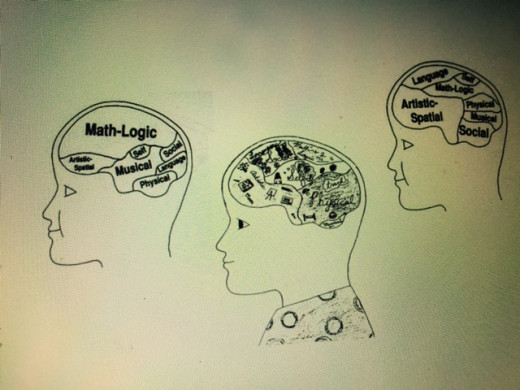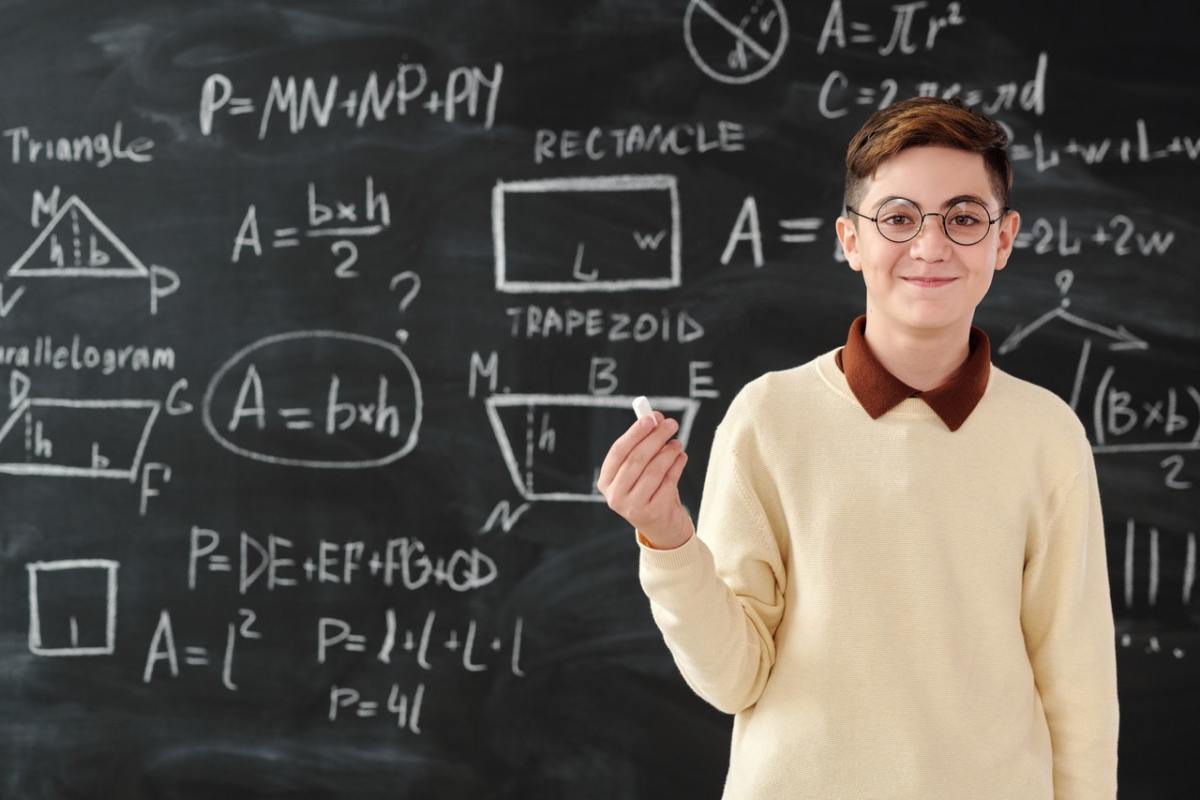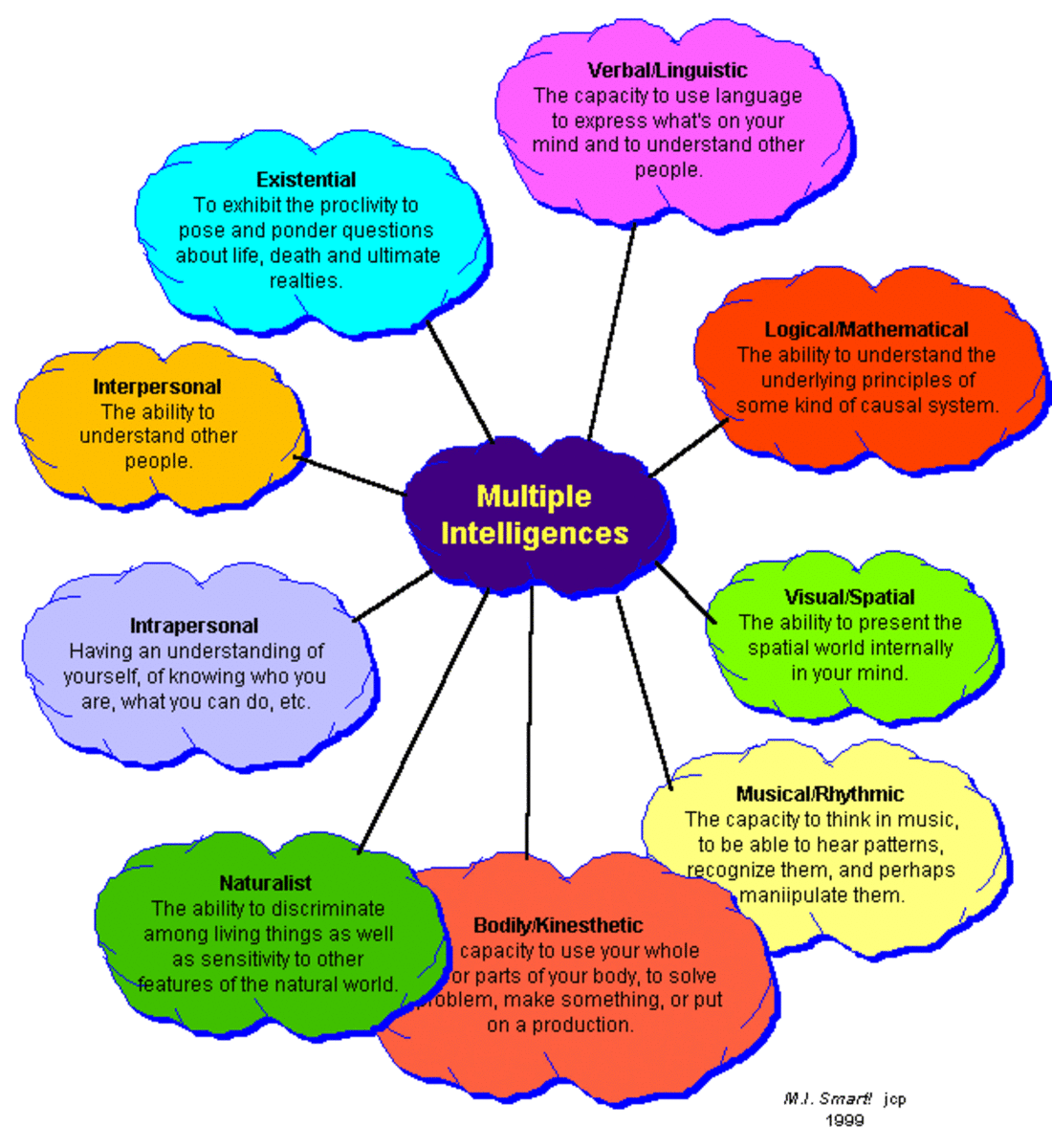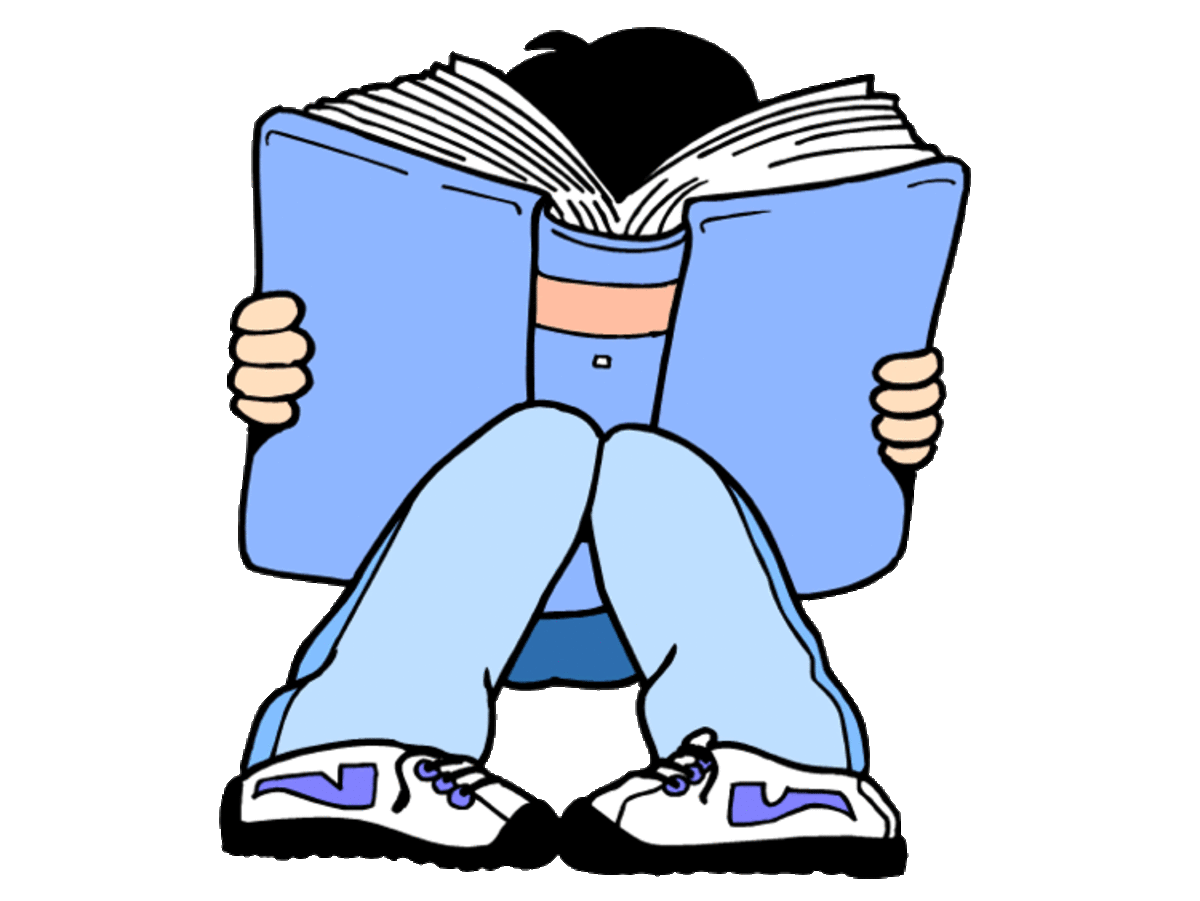Different Kinds Of Mind -Different kinds Of Jobs
Having different/eight kinds of minds is not a problem. Rather it is an asset. In our world, we have different kinds of jobs to be done. So it is good thing that ‘there are different kinds of minds to do them’ (Levine, 1993). This is rendering this world a wonderful place. Let us suppose if in this world, there are only people who are strong in Linguistic and logical-mathematical intelligence and weak in other intelligences, these people will be good in mathematical operations and they will be orators. But then who would do the job of a carpenter. In that case, there would be no musician or dancer. Similarly if there are only people who are body smart, then the world would be deprived of mathematicians, speakers, preachers, etc. Then this world would not have been a happier place to live in.
Each Person’s Brain Is Different
According to Gardner, everyone is born with all the eight intelligences. But these are not equally developed in an individual. This means that different individuals are strong in two or three different intelligences and weak in other intelligences. Given below are sketches of brains of three different persons. ‘This manifests clearly that each person’s brain is different’. (Huggins and others, 1997) Sketch-1 manifests that the person is strong in Logical-Mathematical and Musical intelligences and weak in other intelligences. Similarly second Sketch-2 manifests that the person is strong in Spatial and Linguistic Intelligences and weak in other intelligences. Sketch 3 reflects that person is strong in spatial, interpersonal and bodily kinesthetic intelligences and weak in other intelligences.

Gardner claims that these eight intelligences rarely operate independently. Rather these intelligences are used concurrently and typically complement each other as individuals solve problems. Almost every complex task requires us to call forth and use several intelligences. For instance a surgeon undertakes operations. For undertaking operations, he/she requires at least three intelligences- Bodily kinesthetic, Spatial and Interpersonal to undertake the operations. Similarly playing the piano requires at least three intelligences – musical for following the music and keeping time, bodily kinesthetic for manipulating the fingers and feet appropriately and spatial for determining the relationship between keys and the sound they produce. (Silver et al, 2000)
Each Type of Brain is Valuable
No one type of brain is the most valuable. Each of the eight intelligences is invaluable. Having a high language or math-logic intelligence can make one’s school life much easier. However, being good in reading or mathematics won’t necessarily make one happier or more successful when he/she grows up. A person with a high social intelligence or self-intelligence might have a happier life than a high language or Logical-Mathematical intelligence student. A person with a high physical or musical intelligence might be more successful in life than a math. whiz.
This does not mean that one should stop trying to do well in school. One wouldn’t be happy if he/she did that. It is important for everyone to know how to read, write, and do mathematics. But other types of intelligence are also important. Even if one has trouble with some parts of schoolwork there are other ways by which he/she can accomplish school work.
Some Intelligences Develop as One Grows Older
Sometimes kids who aren’t particularly strong in one of the intelligences do better in that intelligence when they get older. For instance, it takes some kids a long time to learn to read, but they will get stronger in language intelligence and will read better as they get older. Other kids might not be very good in sports now, but they will do better at them when they are older. Everyone is different with regard to the time when a strong intelligence will show up.
IQ Score not Right Intelligence Indicator
Measuring a person’s intelligence quotient or IQ by a singular, standardized test is “highly misleading”. Scientists have said after conducting the largest online intelligence study on record. The landmark study which included more than 1,00,000 participants asked respondents to complete 12 cognitive tests tapping memory, reasoning, attention and planning abilities, as well as a survey about their background and lifestyle habits. The study by researchers from Western University in Canada showed observed variations in performance which can only be explained with at least three distinct components: short-term memory, reasoning and a verbal component. No one component, or IQ, explained everything. The results also provided a wealth of new information about how factors such as age, gender and the tendency to play computer games influence our brain function. (Times of India, December 21, 2012) Learning Style of Students
In the context of a classroom, there are normally 40 students or so. These students come to the classroom with different sets of developed intelligences. This means that each child has unique set of intellectual strengths and weaknesses. This is commonly referred to as learning style of a student. Different strong intelligences of a student determine her/his learning style. Therefore, the students with many learning styles are in a classroom. These sets of intelligences determine how easy or difficult it is for a student to learn the information when it is presented in a particular manner.
Information is both received and processed in more than one way. According to Gardner, there are eight potential pathways to learning. Students do not learn only through traditional linguistic or logical ways of instruction. They also learn through pictures, music, physical experience, social experience, self-reflection and experience in the natural world.
In a situation, a teacher is experiencing difficulty in reaching a student through traditional linguistic or logical ways of instruction, he/she should use other ways which involve learner’s talent(s) in other areas to facilitate effective learning on his/her part. Thus Gardner suggests that there are eight pathways to learn rather than two believed traditionally.
In the present day schools, children are joining from all sections of population due to emphasis on universal elementary and secondary education. Consequently there are all kinds of talents suited to all kinds of jobs. Fortunately in a developing economy there are a variety of opportunities to which these children can be channelized to unfold and actualize their dominant intelligences. Unfortunately the present curriculum in the schools is selective rather than inclusive. Instead of labeling children average or under achievers, the need is to identify their dominant intelligences which may be nurtured.
Gardner says that our schools and culture pay their attention to linguistic and logical-mathematical intelligences. We esteem the logical and the highly articulate people. There is hardly any attention being paid to many others who show gift in the other intelligences. Artists, architects, musicians, designers, dancers, therapists, entrepreneurs, etc. enrich the world in which we live. They raise the quality of our life. Unfortunately, many children who have low level of linguistic and logical – mathematical intelligence do not perform well in the classroom. Therefore, they are labeled as learning disabled or under achievers. They have their unique ways of thinking and learning. These are not addressed by a heavily linguistic or logical-mathematical classroom. The theory of multiple intelligences recommends a major transformation in the way the instruction is imparted in our schools. It suggests that teachers need to present their lessons in a wide variety of ways using music, cooperative learning, art activities, role play, multi-media, field trips, inner reflection, etc. This would facilitate learning among all the students.
Education is a human right. It is an essential tool for attaining the goal of equality, development and peace. It breaks the vicious circle between poverty and illiteracy. It is a driving force for human development because it aids the upliftment of the weaker sections of society by providing them with a set of useful and marketable skills. This helps in increasing employment opportunities and thereby reducing an individual vulnerability to poverty. Basic education helps an individual to meet his/her basic needs. It helps human beings to develop their capabilities, to live and work with dignity, to participate fully in the national development and to improve the quality of their lives.








